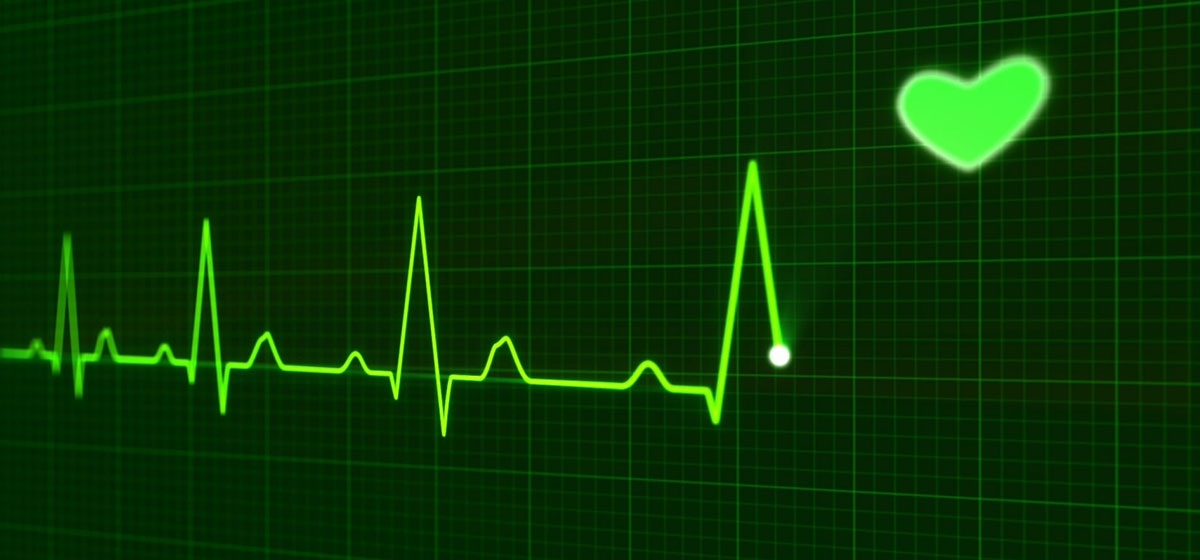The Really Horrible Versus the Ordinarily Horrible

By “PVCs” I don’t mean the stuff they make pipes out of. I mean “premature ventricular contractions.” When people have heart attacks, especially serious ones, heart muscle dies and turns into useless, deadweight scar tissue. To make matters worse, hearts that are pocked by scar tissue conduct electrical waves very differently than hearts that are full of healthy heart muscle – and that’s what causes PVCs. They are partial heartbeats, beats that start but then stop and which confuse the hell out of the rest of the heart, which has to pause, take stock, and then start beating again.
In a healthy heart, something called the sinoatrial node sends out electrical impulses that tell the heart muscle to contract. But in a damaged heart, scar tissue can cause those impulses to scatter, convincing the heart (momentarily) that it’s supposed to contract again, even though it just finished contracting. The heart quickly thinks better of this and doesn’t contract fully, creating a partial heartbeat.
Lots of people have occasional PVCs—heart palpitations—and they may not even notice them, or they may feel a “flutter” in the chest. But when you start getting 25,000 or so PVCs a day your life can turn miserable. You become anxious and depressed, can’t exercise, often feel dizzy, are at high risk for heart failure. Your doc will put you on all sorts of meds designed to deal with the symptoms of PVCs, and then on antidepressants and anti-anxiety drugs. I have 90,000 PVCs/day.
On the other hand, there are two kinds of PVCs—the really horrible kind and the ordinarily horrible kind. The really horrible PVCs are always there, no matter what you’re doing. Sitting in your rocking chair watching TV? You have PVCs. Trying to go up Negley Hill? You won’t get 10 steps before you start to black out.
Fortunately for me, I have the ordinarily horrible kind of PVCs. These are always there except when I exercise hard, and then they magically disappear. You can see this on the video monitor when I take a treadmill stress test. In between every heartbeat the graph shows a partial heartbeat. Then, when I get up to about 120 heartbeats per minute, the screen blips and the graph shows a perfectly normal heartbeat with no PVCs at all.
And that’s the answer to the mystery of why my heartbeat rises very rapidly when I’m merely walking over to Negley Hill, and then very rapidly again as I get halfway up the hill, but then rises much more slowly after that. At about the halfway point of the hill—that is, when my heart is beating at120 times per minute—my PVCs go away. For a blissful (if exhausting) few minutes, I’m a normal person with a normal heartbeat.
But let’s step back for a second and think about the nature of what the heart really is. In one important sense, the heart is a pump, analogous in most ways to any mechanical pump. The hand-operated water pumps that everybody used to have outside their farmhouses, for example, were simple machines that were efficient and long-lived and required minimal maintenance. However, they eventually wore out if moving parts weren’t replaced regularly.
The human heart is quite similar: it’s a relatively simple machine that is efficient and long-lived and requires minimal maintenance. Will it eventually wear out even if well cared-for? Probably. Prior to the discovery of the Hayflick phenomenon in 1961, it was widely believed that human cells were immortal. But Leanard Hayflict demonstrated that the cells could only divide +/- 50 times before entering senescence, due to the shortening of the telomeres on the end of each chromosome. (Except, alas, for cancer cells, which actually do seem to be immortal.)
Certain people—and not just Donald Trump—have therefore concluded that each person’s heart can only beat a certain number of times, and therefore we should avoid exercise because we’re simply using up our allotment of heartbeats unnecessarily.
But as I just reported, exercise actually reduces the natural heart rate. Before I started exercising again after my heart attack, my resting pulse rate was 78. It’s now 61. That means I’m saving roughly 25,000 heartbeats/day, 9 million/year. Hello, Don?
After open heart surgery you report to “cardiac rehab” for exercise therapy. Rehab’s goals are modest: to turn us from Dead People Walking into Ordinary Invalids. Most of the men who were at rehab with me (the population was overwhelmingly male) had ambitious plans to keep exercising when they graduated from rehab. Yet, even a year later almost none of them was exercising at all—unless you consider walking the dog to be exercise.
The reason these men weren’t doing the single most important thing they could do—exercising their heart muscles—was simple. By the time they left rehab they were on so many meds that they felt crappy all the time, had no energy, and could barely get through the day.
Why is it that medical science is so pill-crazy they can’t see that they are killing their patients? One illuminating way to get at this issue is to follow the bizarre history of something I’ll call the Heart Cholesterol Hypothesis (HCH, sometimes known as the “lipid hypothesis”). HCH captured the medical mind more than half a century ago and the profession, or at least its major lights, stopped thinking right then. Stay tuned.
Next up: Why We Don’t Take Our Meds (Again), Part VI





